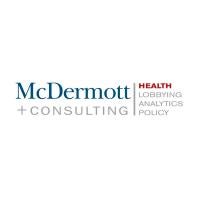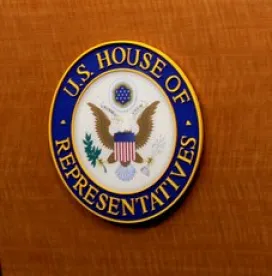On April 23, 2020, the US Congress passed the fourth Coronavirus (COVID-19) stimulus bill, the Paycheck Protection Program and Health Care Enhancement Act (H.R. 266). This bill provides an additional $310 billion for small business loans available through the Paycheck Protection Program, as well as an additional $75 billion toward the Emergency Fund for healthcare providers. It also appropriates $25 billion for various federal agencies and state and local governments to increase COVID-19 testing capacity. The President is expected to sign the bill.
Background
Since March 6, 2020, four major pieces of legislation responding to the coronavirus have been signed into law, providing more than $2.7 trillion to combat COVID-19 and buttress and stimulate the economy. The third and immediately previous bill, the Coronavirus Aid, Relief, and Economic Security (CARES) Act, approved on March 27, 2020, pumped more than $2 trillion into the economy through loans, grants, funding for federal agencies and increased reimbursement, and provided broad regulatory relief.
Many stakeholders and members of Congress anticipated that a fourth package would be necessary, but expected to have more time to plan additional policies or targeted funding. That expectation was upended when a CARES Act small business loan program, the Paycheck Protection Program (PPP), ran out of money within two weeks of opening. Given the popularity of the program and the limited reach of the existing funds, Congress very soon after CARES began working on additional legislation to provide more funds for the PPP.
At the same time, Congress recognized that the $100 billion in emergency funding for healthcare providers under CARES would be insufficient to support providers on the frontlines and those experiencing decreased revenue as a result of the pandemic. The final bill includes an additional $310 billion for the PPP, $75 billion in emergency funding for healthcare providers and $25 billion for increasing testing capacity.
H.R. 266 passed the US Senate by voice vote on April 21, 2020. The US House of Representatives passed the bill on April 23, and the president is expected to sign the bill into law.
Public Health Fund for Providers
The CARES Act included $100 billion to the Public Health and Social Services Emergency Fund for eligible healthcare providers to use for healthcare-related expenses or lost revenues associated with COVID-19. Providers that provide diagnoses, testing, or care for individuals with possible or actual cases of COVID–19 are eligible to receive support from this fund.
On April 10, 2020, the US Department of Health and Human Services (HHS) allocated the first $30 billion of the Fund to Medicare providers using a formula that generally conveyed 6.2% of an eligible recipient’s 2019 Medicare Fee-for-Service (FFS) revenue. On April 22, 2020, HHS announced plans for next tranches of funding.
In response to HHS’s initial Fund allocation, many stakeholders advocated not only for additional funding, but also for lawmakers to direct HHS how to allocate these funds. H.R. 266 provides an additional $75 billion for this Fund, but it does not include policy changes or otherwise alter how HHS should allocate funding among providers.
Increasing Testing Capacity
Efforts to increase testing capacity have only intensified since the passage of the CARES Act. While new tests are being developed and approved by the US Food and Drug Administration on an expedited basis, many stakeholders are still concerned about inadequate testing capabilities.
To that end, H.R. 266 includes $25 billion for research, development, validation, manufacturing, purchasing, administering and expanding capacity for COVID-19 tests. Congress provided direction on how this funding will be divided:
- $11 billion is for states, localities, territories and tribes to develop, purchase, administer, process and analyze COVID-19 tests, scale-up laboratory capacity, trace contacts and support employer testing. Funds will also be available to employers for testing. Of this $11 billion:
- $2 billion is provided to states, consistent with the Public Health Emergency Preparedness grant formula, ensuring every state receives funding.
- $4.25 billion is provided to areas based on relative number of COVID-19 cases.
- $750 million is provided to tribes, tribal organizations and urban Indian health organizations in coordination with Indian Health Service.
- $1 billion is provided to Centers for Disease Control and Prevention for surveillance, epidemiology, laboratory capacity expansion, contact tracing, public health data surveillance and analytics infrastructure modernization.
- $1.8 billion is provided to the National Institutes of Health to develop, validate, improve and implement testing and associated technologies; to accelerate research, development and implementation of point-of-care and other rapid testing; and for partnerships with governmental and non-governmental entities to research, develop and implement the activities.
- $1 billion is provided to the Biomedical Advanced Research and Development Authority for advanced research, development, manufacturing, production and purchase of diagnostic, serologic or other COVID-19 tests or related supplies.
- $22 million is provided to the Food and Drug Administration to support activities associated with diagnostic, serological, antigen and other tests, and related administrative activities.
- $825 million is directed for community health centers and rural health clinics.
- Up to $1 billion may be used to cover costs of testing for the uninsured.
Small Business Administration Loans
The CARES Act also provided economic relief to small businesses through Small Business Administration (SBA) loan guarantees and subsidies. Eligible entities include small businesses, nonprofits and veteran organizations with fewer than 500 employees. These expansions allowed some healthcare entities to be newly eligible for the economic injury disaster loans (EIDLs) and the PPP.
Economic Injury Disaster Loans
The CARES Act allocated $10 billion for emergency EIDLs, which are available to businesses with fewer than 500 employees in states where the governor has declared a state of emergency under the Stafford Act. These loans can be up to $2 million and may be used by small businesses to pay off debt, payroll and other bills that can’t be paid because of the disaster. The CARES Act stipulated that in issuing these loans the SBA may waive any personal guarantee on loans less than $200,000 and offer loans solely based on credit score. Loan recipients may request an advance on a loan of less than $10,000, which the SBA must make available within three days.
H.R. 266 increases appropriations for emergency EIDLs from $10 billion to $20 billion. It does not include any policy changes that would affect the eligibility of healthcare entities.
Paycheck Protection Program
As noted, the CARES Act also established and provided $310 billion for the PPP. This program is designed to help small businesses avoid closure or layoffs, and can be used to cover payroll, utilities, insurance premiums, and rent and mortgage interest payments on a facility. This program is tailored to businesses that typically would not qualify for a loan at an average local or national bank. The loans require no collateral, credit test or personal guarantees from a business, only proof that the business was open and operational on February 15, 2020. In order to attract lenders, the government is offering a 100% guarantee on loans through the end of 2020. The PPP was widely popular among small businesses and ran out of money on April 16, 2020.
H.R. 266 provides an additional $310 billion for the PPP program. It does not include any policy changes that would affect the eligibility of healthcare entities.
What’s Next?
Healthcare providers anxiously await the release of the remainder of the $104.6 billion in emergency funding from HHS. Depending on how this funding is distributed, further support may be necessary.
While there is broad consensus that a fifth package likely will be necessary as the country continues to cope and then recover, the infusion of funds from H.R. 266 has impacted the sense of urgency. Because lawmakers remain hesitant to return to the Capitol to resume normal business, the next package is unlikely to be considered before the end of May 2020.
In the meantime, the Trump administration continues to implement policy changes and release additional loan and grant funding as provided through the CARES Act. HHS also continues to announce regulatory flexibility for healthcare providers during the pandemic. Stakeholders should continue to evaluate other financial or regulatory relief that may be necessary to help with recovery.



 />i
/>i

